MARKET OVERVIEW
The global skin booster market will keep one in the spotlight as discourse around skin wellness moves beyond traditional beauty regimens. The market will not just be about looks but will instead cater to long-term moisturizing, skin health, and subtle refining of natural texture. In contrast to products that cover up temporarily, the industry will trend toward solutions that restore and sustain balance under the surface. As research develops and consumer curiosity deepens, the global market will gradually define itself as a bridge between dermatology and aesthetic wellness, positioning its offerings as integral to the way individuals will approach self-care in the years ahead. At the heart of this industry will be a commitment to treatments that work gradually rather than delivering instant but short-lived changes.
The global skin booster market will be known for pioneering therapies that trigger normal processes, enabling people to observe results that improve over time. This aspect will set the market apart from conventional cosmetic repairs, imparting on it a distinct image that will speak to those who desire subtlety and genuineness. With growing clinical experience and product development, the business will generate room where scientific reliability will go alongside individual confidence. Geography will have a significant contribution to the manner in which the global market will increase. Different regions will have varying preferences, but an element of common desire for solutions that accentuate intrinsic features without overdoing it will bring demand together.
The industry will not only keep pace with trends but will forecast changes in lifestyle, climate, and cultural attitudes to beauty. Through this, the global market will prove its capacity to fit different expectations without sacrificing a shared language of healthier skin. Future debate about this market will probably refer to its capacity to reconcile accessibility with sophisticated care. Where once the domain of clinic-only treatments, treatments will be more accessible, allowing a wider audience to investigate them. This trend will not reduce quality but will highlight a greater faith in the science behind these solutions.
The market will demonstrate how medical-grade technology can coexist with mainstream beauty routines, redefining the limits of skin care without overwhelming the consumer. Perhaps the greatest feature of the industry will be its dependence on conversation among professionals and individuals. Rather than imposing uniform outcomes, practitioners will promote individualized methods, and each individual will be able to select the level of improvement they will want. This cooperative factor will reaffirm that the market will not be constructed on notions of perfection but on sustaining the varied forms of self-assurance. The business will distinguish itself by listening, adapting, and changing with the people it will be serving.
Over time, the global market for skin Booster will be less about trends and more about sustained wellness. Its products will not guarantee overnight transformation but rather call for a commitment to healthier skin over time. This mindset will be what keeps the industry going even after passing beauty trends are done, making it a lasting aspect of future self-care routines. discussions around this market will likely highlight its ability to merge accessibility with advanced care. While once confined to clinical settings, treatments will become more approachable, giving a broader audience the opportunity to explore them. This movement will not dilute quality; rather, it will underscore a growing trust in the science supporting these solutions. The global skin booster market will show how medical-grade advancements can coexist with mainstream beauty practices, reshaping the boundaries of skincare without overwhelming consumers.
One of the most significant aspects of the industry will be its reliance on dialogue between professionals and individuals. Instead of dictating uniform results, practitioners will encourage personalized approaches, allowing each person to choose the degree of enhancement they will desire. This collaborative element will reinforce the idea that the global market will not be built on ideals of perfection but on supporting diverse expressions of confidence. The industry will stand out by listening, adjusting, and evolving alongside those it will serve.
As time progresses, the global market will become less about trends and more about sustained well-being. Its offerings will not promise transformation overnight but will instead encourage ongoing commitment to healthier skin. This outlook will ensure that the industry will remain relevant long after fleeting beauty movements fade, positioning it as an enduring part of future self-care practices.
Global skin booster market is estimated to reach $3,702.90 Million by 2032; growing at a CAGR of 13.8% from 2025 to 2032.
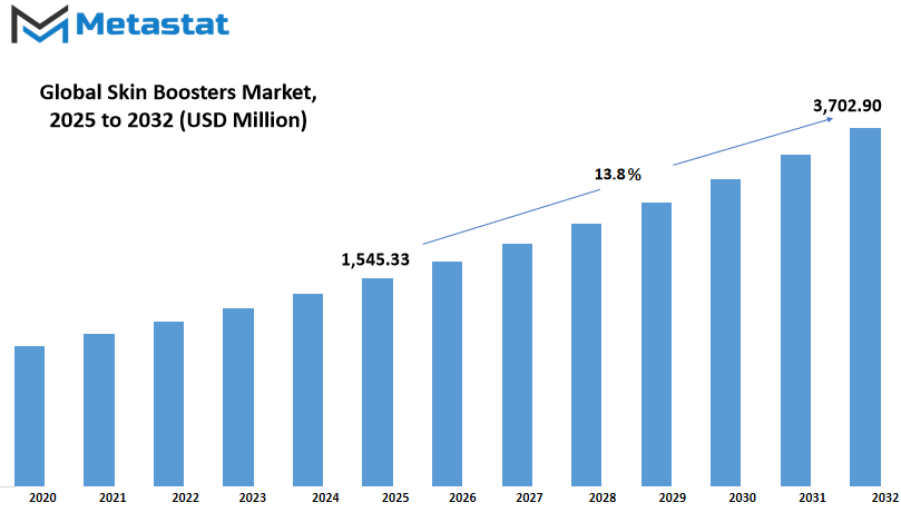
GROWTH FACTORS
The global skin booster market is gaining attention as more people look for cosmetic solutions that are less invasive but still effective. Demand for treatments that enhance skin quality without requiring surgery continues to increase, and this trend will shape the market in the years ahead. Growing awareness of anti-aging methods and the importance of consistent skincare treatments is pushing the popularity of skin Booster across different regions. People are becoming more interested in maintaining youthful and healthy skin, and this shift in consumer preference will drive market expansion.
Despite this positive outlook, certain challenges remain. High treatment costs often make these procedures difficult to access for a larger share of the population. While interest is high, affordability becomes a major concern, especially in markets where disposable income levels are lower. Another issue that could slow growth is the possibility of side effects and the lack of enough skilled professionals who can safely perform these treatments. Without proper training and expertise, consumer trust may weaken, which could hold back wider adoption.
Even with these obstacles, opportunities are clear. A major shift is underway toward personalized skincare therapies, where treatments are designed to meet individual needs. This trend is also moving toward combination therapies, where skin Boosters are paired with other cosmetic procedures for better results. This personalized approach will not only improve treatment effectiveness but also attract a larger group of consumers who want solutions tailored to their specific skin concerns. Companies that focus on innovation and create customized solutions will likely capture significant growth in the global market.
The future of this market will also be shaped by advancements in technology. Improved delivery methods, safer formulations, and reduced recovery times will increase consumer confidence. As treatments become safer and easier to access, more people will be willing to try them, especially in developing regions where awareness about skincare is rising quickly. Strong marketing efforts and educational campaigns will further boost adoption, as consumers gain better understanding of the benefits and safety of these procedures.
Overall, the global skin booster market will see both challenges and opportunities in the years to come. While high costs and limited expertise may slow growth, the rising demand for minimally invasive treatments and the trend toward personalized solutions will create strong momentum. With continued innovation and growing awareness, this market will likely establish itself as a vital segment of the broader skincare industry.
MARKET SEGMENTATION
By Type
The global skin booster market is further segmented into Mesotherapy and Micro-Needle procedures. Mesotherapy has been widely recognized for its ability to deliver essential nutrients directly into the skin. This technique focuses on improving hydration, elasticity, and overall skin quality by introducing vitamins, minerals, and hyaluronic acid into targeted areas. The demand for Mesotherapy is expected to expand as more individuals look for safe and effective treatments that can be personalized to different skin concerns. On the other hand, Micro-Needle treatments are gaining popularity due to their ability to stimulate collagen production. This method uses fine needles to create micro-channels that encourage the skin to repair itself naturally. The combination of minimal invasiveness and visible results has made Micro-Needle treatments a significant growth driver within the market.
The future of the global market will likely be shaped by continuous technological progress and greater awareness of skin health. Advancements in treatment techniques are expected to bring more comfortable experiences and faster recovery times. With the development of customized solutions, treatments will become more precise, targeting individual skin needs in a way that was not possible before. This personalization will attract both younger consumers interested in prevention and older individuals seeking rejuvenation.
Rising urbanization, changing lifestyles, and increasing disposable incomes are also contributing to higher demand. As skincare becomes an essential part of daily routines, more attention will be placed on treatments that provide both cosmetic and wellness benefits. The role of research and clinical studies will remain critical in ensuring safety and building trust among consumers. Global collaborations between healthcare providers, researchers, and cosmetic brands will encourage innovation and help the industry reach new heights.
Looking ahead, the global skin booster market will not only respond to growing beauty standards but will also address long-term skin health. With Mesotherapy and Micro-Needle treatments leading the way, the industry is moving toward a future where non-surgical solutions become more accessible, advanced, and widely accepted across different regions
By Ingredient
By ingredient, the global skin booster market is segmented into Hyaluronic Acid (HA), Polydeoxyribonucleotides (PDRN), Poly-L-Lactic Acid (PLLA)/ Poly-D,L-Lactic Acid (PDLLA), Polycaprolactone (PCL), and Exosomes. Each of these ingredients brings unique benefits and potential applications, which are likely to shape the market's future landscape.
Hyaluronic Acid (HA) is expected to remain a cornerstone of the global market due to its exceptional ability to retain moisture and improve skin elasticity. Advances in HA formulations will likely enable deeper penetration into the skin, enhancing hydration at a cellular level. Polydeoxyribonucleotides (PDRN), known for their regenerative properties, will gain traction as research uncovers more about their potential to repair damaged tissues and stimulate collagen production. As consumers increasingly seek natural and effective solutions, PDRN-based skin Booster are expected to see rising adoption.
Poly-L-Lactic Acid (PLLA) and Poly-D,L-Lactic Acid (PDLLA) will continue to expand in the global market by offering gradual volume restoration and stimulation of collagen synthesis. These ingredients provide results that develop over time, appealing to individuals looking for subtle, long-term improvements rather than immediate effects. Polycaprolactone (PCL), with its biocompatible and biodegradable characteristics, will play a prominent role in high-end skin booster formulations. Its controlled degradation allows for sustained results, which may redefine the expectations of longevity in cosmetic treatments.
Exosomes represent one of the most promising frontiers in the global market. These cell-derived vesicles have the potential to revolutionize skin regeneration by delivering essential growth factors and signaling molecules directly to skin cells. Ongoing research and clinical trials are expected to expand the understanding of exosomes, potentially unlocking new applications and highly personalized treatments.
The global skin booster market is poised for remarkable expansion as technology and scientific discoveries continue to refine ingredient efficacy and delivery methods. With consumer preferences shifting toward minimally invasive, long-lasting, and natural-looking outcomes, the market is likely to embrace innovative ingredients and techniques that deliver noticeable improvements while maintaining safety and convenience.
By Gender
The global skin booster market is further divided into Female and Male segments. The female segment will remain dominant due to a higher tendency to invest in skincare treatments and aesthetic procedures. However, the male segment is projected to show substantial growth as men increasingly focus on grooming and skin wellness. The societal shift toward self-care and appearance maintenance will encourage more male consumers to explore options previously considered more common among women.
Technological advancements will play a crucial role in shaping the future of the global market. Newer products will integrate bioactive ingredients, peptides, and hyaluronic acid derivatives, enhancing skin hydration and promoting collagen production. In addition, personalized treatments tailored to individual skin types and conditions will become more accessible, making these procedures more effective and appealing. Clinics and cosmetic centers will adopt advanced diagnostic tools to better understand skin needs and provide targeted treatments, ensuring optimal results.
By End Use
The global skin booster market is divided into dermatology clinics and medical spas. Dermatology clinics will continue to be preferred for treatments requiring professional medical supervision. The trust associated with licensed dermatologists and the precision of clinical procedures will drive patients towards these facilities. Advancements in treatment formulations, such as bioactive ingredients and customizable solutions, will allow clinics to provide highly targeted care. With continuous research and development, clinics will introduce skin Booster that address specific concerns, such as aging, pigmentation, and environmental damage. This personalized approach will enhance the overall patient experience and reinforce the credibility of medical professionals.
Medical spas, on the other hand, will cater to a broader audience seeking non-invasive treatments in a more relaxed environment. The emphasis on comfort and convenience will attract clients who are looking for routine maintenance and preventive skincare. The integration of technology, including AI-assisted skin analysis and virtual consultations, will further enhance the appeal of medical spas. These facilities will not only offer traditional skin booster treatments but also combine them with complementary therapies to provide a holistic experience. As the lifestyle of individuals becomes more fast-paced, the demand for accessible and time-efficient treatments will push medical spas to innovate and expand their offerings.
The future of the global skin booster market will also be shaped by growing awareness of personalized skincare and preventive treatments. Emerging trends, such as sustainable and bio-compatible ingredients, will influence both dermatology clinics and medical spas. Investments in research and innovation will ensure that treatments continue to evolve, providing more effective, safer, and longer-lasting results. With these advancements, the market will strengthen its position, making skin booster treatments an integral part of both routine skincare and specialized medical care.
|
Forecast Period |
2025-2032 |
|
Market Size in 2025 |
$1,545.33 million |
|
Market Size by 2032 |
$3,702.90 Million |
|
Growth Rate from 2025 to 2032 |
13.8% |
|
Base Year |
2024 |
|
Regions Covered |
North America, Europe, Asia-Pacific Green, South America, Middle East & Africa |
REGIONAL ANALYSIS
The global skin booster market is expected to grow significantly over the coming years as technological advancements and rising awareness about skin health continue to shape consumer choices. Products designed to enhance hydration, improve elasticity, and rejuvenate skin will gain increasing popularity across various regions. Market growth will be driven by a combination of innovations in formulations, minimally invasive procedures, and the expanding influence of digital platforms that educate consumers about skincare benefits. With a focus on delivering long-lasting results and improving overall skin appearance, the industry will attract both medical professionals and individual consumers seeking preventive and corrective treatments.
Based on geography, the global skin booster market is divided into North America, Europe, Asia-Pacific, South America, and the Middle East & Africa. North America is further segmented into the U.S., Canada, and Mexico. The U.S. will continue to hold a leading position due to high consumer spending, advanced healthcare infrastructure, and early adoption of new technologies. Canada and Mexico will show steady growth, supported by increasing investments in skincare clinics and rising awareness of anti-aging treatments. Europe, consisting of the UK, Germany, France, Italy, and the Rest of Europe, is expected to witness moderate but steady expansion. The UK and Germany will drive the region’s market due to strong consumer interest in dermatology services and innovative skin treatment options, while France and Italy will contribute through rising demand for cosmetic procedures that enhance natural skin radiance.
Asia-Pacific is projected to experience the fastest growth among all regions, with India, China, Japan, South Korea, and the Rest of Asia-Pacific leading demand. Rapid urbanization, increased disposable income, and a growing focus on beauty and wellness will support the region’s market growth. Japan and South Korea will play a critical role due to the integration of advanced skincare technologies and strong consumer inclination toward preventive treatments. China and India will see rising demand from both metropolitan and emerging urban areas. South America, which includes Brazil, Argentina, and the Rest of South America, will witness steady market expansion supported by rising awareness and adoption of minimally invasive treatments. The Middle East & Africa, divided into GCC Countries, Egypt, South Africa, and the Rest of Middle East & Africa, will show gradual growth as luxury skincare and aesthetic treatments gain acceptance.
The global skin booster market will continue to evolve as new technologies emerge, consumer preferences shift toward natural and effective solutions, and healthcare providers expand services to meet rising demand. Regional differences will shape the market’s trajectory, but overall growth will be supported by innovation, education, and increasing investment in skin wellness solutions worldwide.

COMPETITIVE PLAYERS
The global skin booster market has witnessed remarkable growth over recent years, driven by increasing consumer awareness of skin health and the rising demand for minimally invasive cosmetic treatments. Skin Booster are designed to improve skin hydration, elasticity, and overall texture, making them highly sought after across both mature and emerging markets. The industry is expected to maintain a strong trajectory as technological advancements in formulation and delivery methods continue to enhance product effectiveness.
Competitive players in the global skin booster market have played a pivotal role in shaping its future. Companies such as Teoxane SA, Galderma SA, Merz Aesthetics GmbH, Croma-Pharma GmbH, Matex Lab S.p.A. (Neauvia), Laboratoires FILLMED (Filorga), Medytox, Inc., VAIM Co., Ltd, and LINKUS GLOBAL Co., Ltd are consistently investing in research and development to introduce innovative solutions. These players focus on creating products that address diverse skin concerns, ranging from fine lines and wrinkles to deeper hydration needs. Strategic partnerships and acquisitions are also expected to become more common as companies strive to expand their global reach and strengthen their product portfolios.
The competitive landscape within the global market indicates that differentiation will rely heavily on product efficacy, safety, and brand credibility. The future will likely see greater emphasis on customized solutions tailored to specific skin types and conditions. Additionally, advances in bioengineering and non-invasive delivery systems will enable more efficient and targeted results, further enhancing consumer satisfaction. Market players will also be compelled to adapt to changing regulatory requirements and consumer preferences, ensuring that safety and quality standards remain high while meeting the expectations of a health-conscious audience.
Innovation in the global market will not only involve product formulation but also packaging and application methods. Companies are expected to explore eco-friendly and sustainable solutions, appealing to the growing number of environmentally conscious consumers. Digital platforms and teleconsultation services will support market expansion by providing accessible guidance and boosting consumer confidence in product selection.
The global skin booster market will continue to grow as competitive players invest in technology, consumer education, and global expansion. Companies that focus on innovation, safety, and personalized solutions will likely lead the industry, shaping its direction and defining future trends. Strong collaboration among market leaders, coupled with continuous product improvement, will ensure that the sector remains dynamic and responsive to evolving consumer needs.
Skin Booster Market Key Segments:
By Type
- Mesotherapy
- Micro-Needle
By Ingredient
- Hyaluronic Acid (HA)
- Polydeoxyribonucleotides (PDRN)
- Poly-L-Lactic Acid (PLLA)/ Poly-D,L-Lactic Acid (PDLLA)
- Polycaprolactone (PCL)
- Exosomes
By Gender
- Female
- Male
By End Use
- Dermatology Clinics
- Medical Spa
Key Global Skin Booster Industry Players
- Teoxane SA
- Galderma SA
- Merz Aesthetics GmbH
- Croma-Pharma GmbH
- Matex Lab S.p.A. (Neauvia)
- Laboratoires FILLMED (Filorga)
- Medytox, Inc.
- VAIM Co., Ltd
- LINKUS GLOBAL Co., Ltd.
WHAT REPORT PROVIDES
- Full in-depth analysis of the parent Industry
- Important changes in market and its dynamics
- Segmentation details of the market
- Former, on-going, and projected market analysis in terms of volume and value
- Assessment of niche industry developments
- Market share analysis
- Key strategies of major players
- Emerging segments and regional growth potential



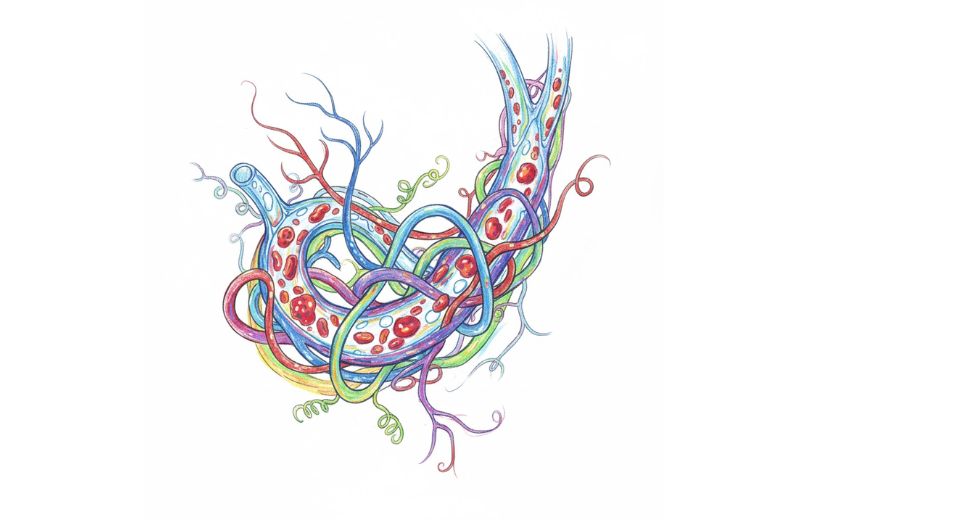
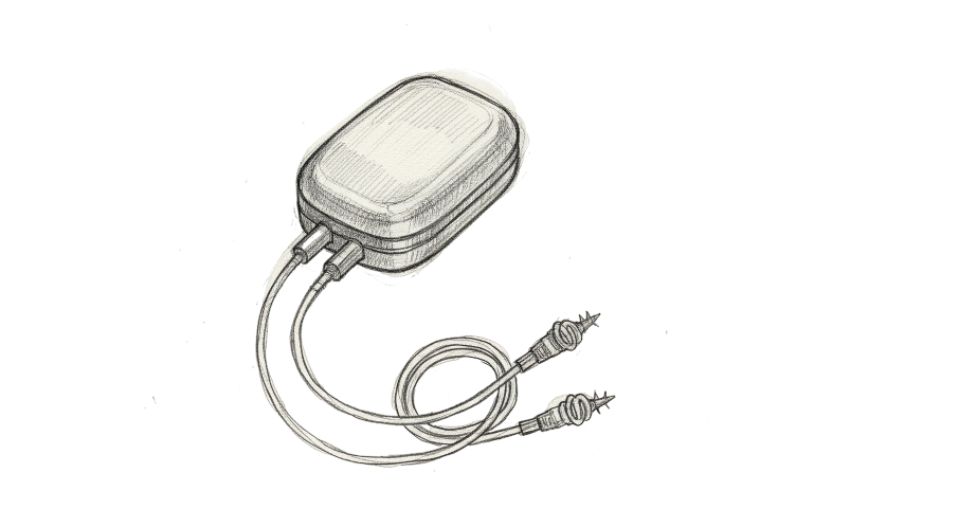
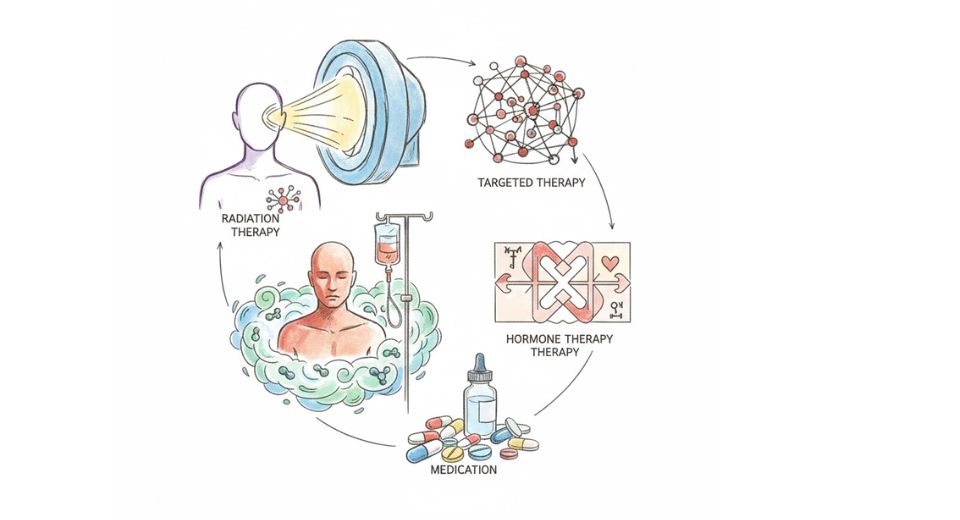
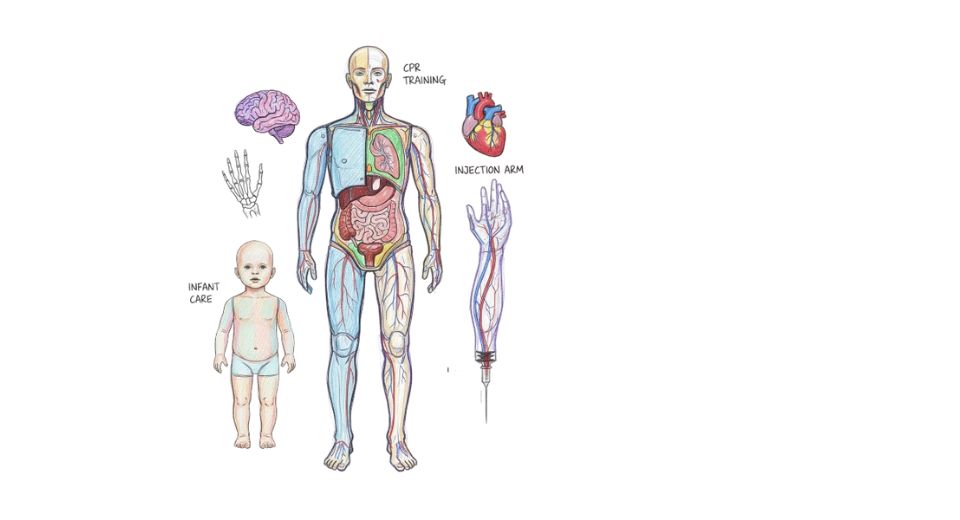

 US: +1 3023308252
US: +1 3023308252






